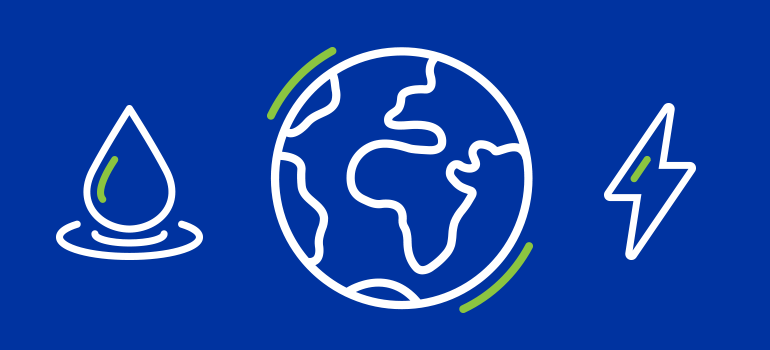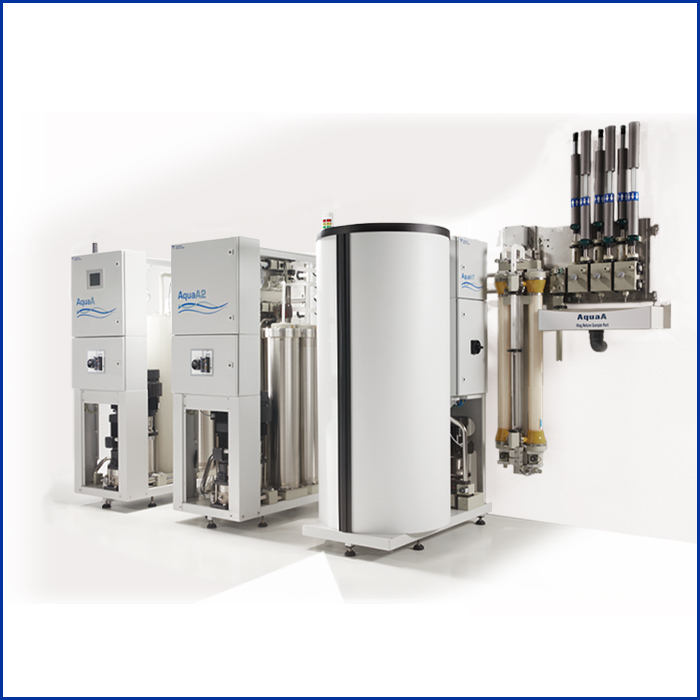
Earth-Friendly Upgrades: The Sustainable Technology of 2008T BlueStar™ Dialysis Machines and AquaBplus™ Water Treatment Systems
Dialysis machines and water purification systems are indispensable to providing therapy for people with end stage renal disease. In the process, however, this equipment also uses large quantities of water and electricity as part of daily operations.
A few years ago, Fresenius Medical Care Renal Technologies assessed its dialysis and water purification systems and identified opportunities for conservation. We started initiatives to reduce the amount of water and power our machines consume and confirm that optimal settings were being used at dialysis centers across the country.
A recent evaluation showed that these changes are helping customers limit waste while ensuring systems continue to perform as intended.
Swimming in Savings
According to the U.S. Geological Survey (USGS), a one-million-gallon swimming pool — if one existed — would measure 267 feet long, 50 feet wide, and 10 feet deep.1 Now imagine what it might look like to conserve the equivalent of 13 of these pools filled to the top with water. According to calculations by the National Sustainability Team at Fresenius Medical Care North America, this represents the potential annual water savings that could be realized if a single water-efficient setting is enabled for the vast majority of 2008T dialysis machines.2
In 2018, Fresenius Renal Technologies upgraded the technology in the flagship 2008T dialysis machine with an improved “idle mode” setting that can drop the machine’s dialysate flow to 100 mL/min when blood is not sensed. Prior to this change, idle mode’s default flow rate was 300 mL/min. With this optimal setting enabled, 2008T dialysis machines have the potential to save 1.09 gallons of water for each day of use.2
One of our customers is switching approximately 39,000 of their 2008T dialysis machines to idle mode (their goal for 2021) and that could mean more than 13 million gallons in conserved water2 over the course of a year.* In addition, their clinics could expect considerable sewage reduction and the financial benefits that come with conserving resources.
Another opportunity for reducing wasted water was discovered by taking a closer look at the volume of water being run through water purification systems. We assisted a nationwide customer in adjusting settings and shifting the flushing and maintenance intervals on the systems to help save some water and potentially extend the life of some components.
All AquaBplus water treatment systems are equipped with an option called “yield,” a setting that determines the proportion of purified water to wastewater that the machine generates. Many systems had yield set as low as 55 percent, which means about half of the water used in the purification process was literally going down the drain. By adjusting to 75 percent on water systems that can be set at a higher yield rate, the amount of wastewater discharged by those systems has been cut nearly in half.3 This optimization has now been applied to more than 600 systems across the U.S., potentially saving substantial amounts of water.
In addition to changing the yield setting, Fresenius Renal Technologies and one of its national customers explored decreasing the frequency of automated cleaning functions of media filters. Backwashing, a process that cleans the purification system’s tanks by running water through them in reverse, had typically been done after hours once per week and in some cases every day. But it was discovered that flushing every two weeks could achieve the same results,4 and backwashing intervals were adjusted wherever possible. This change not only reduces water use, it also has the potential to extend the life of some filters.4
Water softeners, another integral part of the purification process, were also assessed to determine how often they had to be run. Softeners reduce the hardness (high mineral content) in water and use salt to regenerate. Many clinics were able to switch from regenerating softeners as frequently as daily to as little as once per week, thereby conserving large amounts of water and salt.
*Based on assumption of typical machine usage 6 days per week or 313 days per year.
The Power of Electricity Reduction
In addition to idle mode, 2008T BlueStar technology also includes “low power mode,” which basically puts the dialysis machine into sleep mode — delivering power to only the machine’s electronics and turning off all pumps, valves, and modules when dialysis is not taking place. As soon as the keyboard, touchpad, or touchscreen is engaged, the machine “wakes up” again. In low power mode, the 2008T BlueStar machine’s run clock is also turned off, which can reduce the annual run time by 200 hours.
Using low power mode contributes to sustainability and cost savings in the following ways:
- Reducing electricity consumption by roughly 1.4 million kWh per year.2** For perspective, the average U.S. home uses just under 11,000 kWh annually.5
- Reducing maintenance hours in the first year due to decreased run time.6
- Potentially extending the life of the machine.
**Based on assumption of typical machine usage 6 days per week or 313 days per year.
Making Changes and Taking Action
With the realization that better software meant increased sustainability, Fresenius Renal Technologies began including 2008T BlueStar software in all 2008T dialysis machines as of 2020, and field upgrading as many 2008T dialysis machines as possible to this technology. So far, more than 16,000 machines have been upgraded, with an additional 22,000-plus machines scheduled to receive new software by the end of 2021, for a potential total of 38,900 2008T BlueStar machines with active low power and idle mode.
Concurrently, customers across the country continue to replace aging, obsolete, and inefficient water purification systems and components with the more sustainable technology of the AquaBplus while using settings and maintenance cycles that conserve water whenever possible.
As an industry leader offering a range of equipment, Fresenius Renal Technologies views sustainability as an essential part of its mission. By building environmentally friendly, water-and power-saving functionality into our products, we and our customers can make a positive impact on dialysis clinics, staff, and patients in our global community.
1: U.S. Geological Survey (USGS), A Million Gallons of Water — How much is it? Accessed April 22, 2021. https://www.usgs.gov/special-topic/water-science-school/science/a-million-gallons-water-how-much-it?qt-science_center_objects=0#qt-science_center_objects.
2: Data on file, March 2019, Fresenius Medical Care National Sustainability Management
3: Data on file, Feb. 2020, Fresenius Medical Care Renal Technologies
4: Data on file, Dec. 2015, Fresenius Medical Care Renal Technologies
5: U.S. Energy Information Administration, How much electricity does an American home use? Accessed April 22, 2021. https://www.eia.gov/tools/faqs/faq.php?id=97&t=3#:~:text=How%20much%20electricity%20does%20an,about%20 877%20kWh%20per%20month.
6: Data on file, January 2019, Fresenius Medical Care Renal Technologies
Indications for Use:
2008T BlueStar Hemodialysis Machine: The 2008T BlueStar Hemodialysis Machine is indicated for acute and chronic dialysis therapy in a healthcare facility. Additional therapy options for patients receiving hemodialysis include: Isolated Ultrafiltration, Sustained Low Efficiency Dialysis (SLED), and low volume hemodialysis (patients weighing ≥ 20 kg and ≤ 40 kg). This machine accommodates the use of both low and high flux dialyzers. The SLED therapy option is not to be used for patients weighing ≤40 kg. The 2008T BlueStar Hemodialysis Machine is not to be used for plasma replacement therapies for patients weighing less than 20 kg, or for renal therapies using substitution fluid.
The AquaBplus Water Purification Systems are reverse osmosis units intended for use with hemodialysis systems to remove organic and inorganic substances and microbial contaminants from the water used for treating hemodialysis patients or other related therapies. These devices are intended to be a component in a complete water purification system and are not complete water treatment systems. Each reverse osmosis unit must be preceded by pre-treatment devices and may need to be followed by post-treatment devices as well, to meet current AAMI/ANSI/ISO and Federal (US) standards.
Caution: Federal (US) law restricts these devices to sale by or on the order of a physician.
Note: Read the Instructions for Use for safe end proper use of these devices. For a complete description of hazards, contraindications, side effects and precautions, see full package labeling.
© 2021 Fresenius Medical Care. All Rights Reserved. Fresenius Medical Care, the triangle logo, Fresenius Renal Technologies, 2008, 2008T BlueStar, AquaBplus, and Vivonic are trademarks of Fresenius Medical Care Holdings, Inc. or its affiliated companies. All other trademarks are the property of their respective owners. P/N 104775-01 Rev A 06/2021.



